If you happen to live with a puppy, you know how hilarious it is to watch them do zoomies around the house, spill their water bowls, step in food dishes, and chase their tails Your dog never fails to make you smile with his silly antics.
Act of tail-chasing seems playful, and it’s certainly a part of the journey as puppies learn that their tail is just an extension of their body!
For most dogs, the idea of tail-chasing is simply a rite of puppyhood.
Dogs bring joy to our lives but the constant question among a lot of dog owners is Why do dogs chase their tails?
“Obsessive chasing can be due to a brain abnormality akin to seizure-like behavior. Other reasons could be a painful area where the tail was docked, an infection, or could even be cancer.”
Table of Contents
Reasons For Dogs Chasing Their Tails
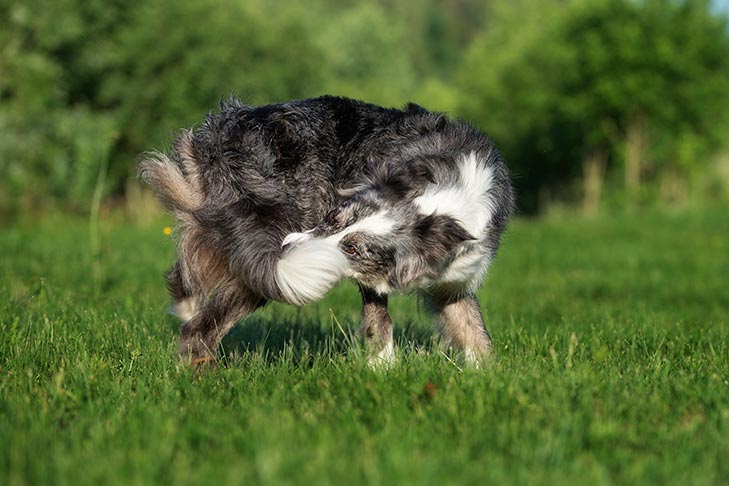
Sometimes it really is just a dog being playful, usually futile attempt to catch its tail.
But other times it’s a sign that something needs to change.
At times older dogs might chase their tails for no particular reason other than that they’ve been confined too long indoors.
Some of the reasons for tail chasing include medical issues, cognitive disorders, playfulness, or compulsive behavior.
Reasons behind tail chasing are wide-ranging.
Some dogs simply chase their tail for some time and quickly move on to a different activity!
There’s nothing to worry about unless you feel it’s turned into an obsession or causing your dog pain or discomfort.
1. Could It Be Compulsive Behavior?

Dog chasing tail can also be a sign of a behavioral problem, these kinds of behavioral problems can come about for many reasons — confinement, physical abuse, past injury or trauma, separation anxiety, and so on.
Sometimes these kinds of disorders cause dogs to chew or lick themselves.
In case your dog has compulsively been chasing his own tail, he can cause serious damage by chewing and biting on it when he finally catches it.
Dogs have been known to experience hair loss and even cause injury on their tails due to this kind of behavior.
We as humans wonder, why do dogs chase their own tails?
Regardless of the initiating factor, dogs with obsessive-compulsive disorder (OCD) chase and chew their tails incessantly and it becomes a compulsive habit.
Tail chasing might also begin as a displacement behavior.
If they don’t see their tail as part of their body, they may believe it’s something worth chasing and ultimately getting hold of it.
Dogs have some genetic predisposition toward this behavior when in situations of anxiety or conflict.
A dog suffering from separation anxiety chases his tail similar to a nervous person who bites his nails.
Fun Fact:

Pet parents often have this question in mind that why does my dog chase his tail?
Dr. Steve Weinberg often hears people link tail chasing to autism in dogs.
“It is a common myth that vaccinations cause autism in animals,” he says.
“There are people who believe that tail chasing is an autistic behavior, therefore they make the connection that vaccination causes this, which is not true.”
2. Boredom:

This is one of the most obvious and easily preventable reasons for a dog chasing its tail.
If a pet is stuck in a crate, or even the same yard all day, he can get pretty dull.
At this moment, going after your own body part becomes exciting.
Littermates spend the most time playing; when they’re weaned, individual puppies can become lonely and bored if they’re left without stimulation.
Making sure your pet has plenty of exercise and stimulation in the form of toys, friends to reduce the urge to chase its tail and even treats can keep your pup from getting bored.
If your puppy chases her tail after you are home with her, and it’s not an on-cue trick, the dog’s likely lacking attention.
3. Attention:

Do you find it amusing to watch your dog chase his tail?
If he is receiving positive attention from you by engaging in the act, it may cause him to do the same for seeking attention.
Dogs are social animals and there’s nothing they love more than the affection and attention from their master.
The behavior is much more likely to persist if a dog learns that by this activity of his they get attention from their owner.
Even negative attention, for example reprimanding a dog, may act as positive reinforcement.
4. Genetics:
For reasons that we still don’t really understand some breeds are more prone to tail chasing than others, breeds like German shepherds and terriers tend to engage in tail-chasing even as they grow older.
Some of the animals have a known genetic predisposition to compulsive behaviors like tail chasing.
For example, flank sucking is common in breeds like Dobermans and Bull Terriers are known for whirling.
In puppies, however, it could be a harmless expression of playful activity.
5. Age:
Dog’s age might also be a factor.
Sudden onset of tail chasing is comparatively common among older dogs and often signals a psychological or medical condition.
Among puppies, however, it can be a harmless expression of play.
On the opposite end of the spectrum, dogs who are older chew their tails due to decreased awareness.
With diminished mental acuity, dogs may engage in more repetitive behaviors such as tail chewing.
6. Swollen Anal Glands or Worms:

The anal glands are sacs, located just inside the anus at 4 and 8 o’clock.
The fluid is secreted which is normally released upon the animal’s bowel movement.
The outflow of these sacs gets obstructed which in turn makes them swollen and uncomfortable.
In case your dog is experiencing trouble with their bottom, they’ll do whatever they can to put ease to it.
Most dogs will drag themselves across the floor in an attempt at soothing these symptoms, but some will start chasing their tails in an attempt to solve the problem.
Stay on top of your dog’s worm preventative treatments to prevent an infestation, and in the situation of swollen glands, consult a vet to get them expressed.
7. Injury/Infection:

If an animal receives an injury to the tail, they often try to ease the discomfort by tail chasing.
Apart from itching due to fleas, a bacterial, yeast infection, or hot spot could be forming around the canine’s posterior.
Some biting insects can nestle on the rump and tail of a dog, causing an immediate urge to itch.
You might not find a flea on your dog’s body as it only takes one flea to cause excessive itching.
Flea treatment and prevention with the consult of a veterinarian can deter tail-chasing behavior caused by these pests.
Cleaning the area and receiving proper medical treatment could stop the behavior from occurring.
Here’s a list of dog allergies along with their various remedies.
Tips To Stop Dogs Chasing Their Tails
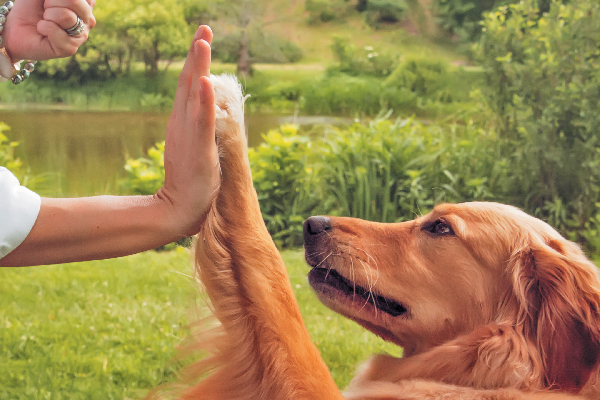
How do you stop a dog from chasing its tail?
Is the question. These tips may help you with the issue.
- Don’t give the behavior any attention (positive or negative) – ignoring it is best.
- Increase your dog’s activity levels.
- Ensure your dog has few interactive toys as Kong stuffed with peanut butter.
- Monitor your dog’s skin and general health and seek veterinary advice if tail chasing persists.
How To Stop A Dog From Chasing His Tail?
Wondering how to stop a dog from chasing its tail?
Let me help you with that.
For a few dogs, the behavior might disappear naturally, for others veterinary intervention may be required to properly diagnose and treat the underlying conditions.
If your dog’s anxiety or compulsive behavior cannot be managed through just puzzle toys or calming aids, your veterinarian might recommend a dog anxiety medication.
You should not give such behavior attention unless it has become compulsive.
Tips:
- Increase the span of your dog’s exercise.
- Reduce stress.
- Consult your vet about behavior modification drugs.
Treatment
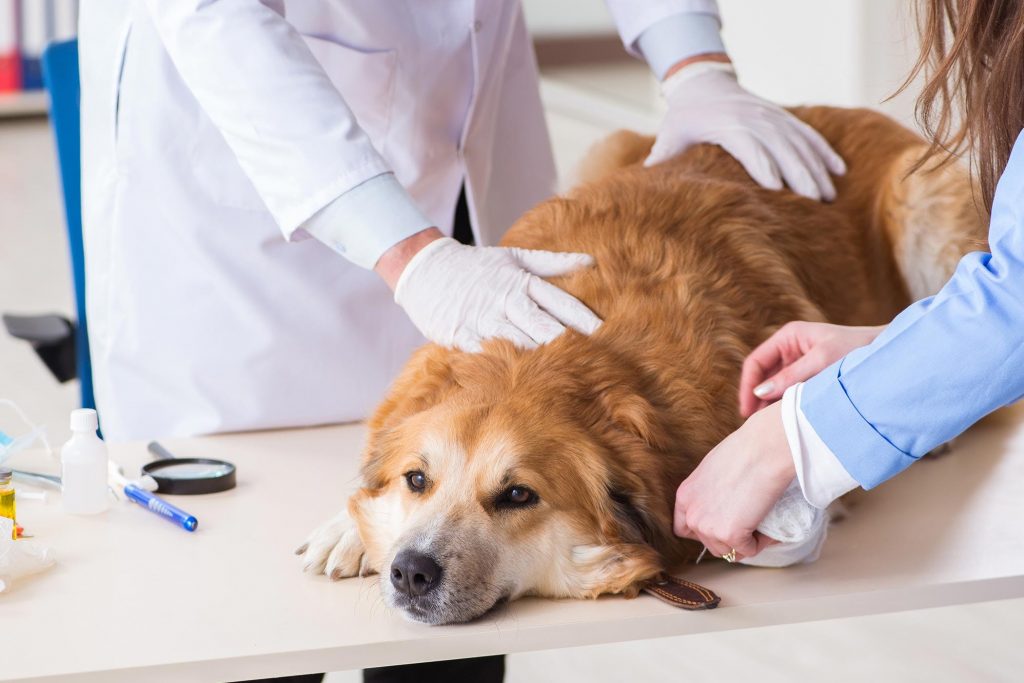
“It’s helpful if owners observe the dog carefully and identify the triggers that initiate the tail chasing.”
Tail chasing is often reduced by the addition of behavior modification drugs that alter serotonin or dopamine levels to the training program.
If someone walks by the house or an animal comes into the backyard and your dog gets anxious, diverting his attention with a rousing game of fetch with his favorite toy.
If behavior modification techniques will help treat your pet’s compulsion can be determined with the help of your veterinarian.
1. Act Early:
If your dog is chasing his or her tail, it’s very important to act early.
In case there is an underlying medical issue, it may be easily treated before it becomes a conditioned response.
2. Behavior Modification Therapy:
If the veterinarian identifies the cause as psychological, you might have to implement a behavioral modification program.
The dog will then learn to self-comfort in all other ways.
If you have been rewarding the good behavior of your dog with positive attention or treats, you may now need to withdraw all rewards and may also need to reduce attention by walking away (and ignoring the behavior) of your dog.
3. Drug Therapy:
Lowered serotonin and increased dopamine levels may be associated with compulsive disorders such as dog tail chasing.
If it’s not possible to bring your dog’s behavior under control by changing his or her environment, then it may be necessary to try drug therapy, such as anti-depressant or anti-anxiety medications.
While it can take several weeks for medications to be effective, it can be a great intermediary step to bring compulsive behavior under control.
Dog’s tail-chasing might just be a reflection of your dog’s fun and spunky personality.
But, it’s more important to watch out for potential problems and intervene if you suspect it to be a symptom of something more serious.
Why Do Puppies Chase Their Tails?

Puppies generally don’t have to do anything but sit there to look cute, their funny little shenanigans make them all the more adorable.
While it looks like all fun and games, there’s a possibility that a puppy might be telling you something when it chases its tail.
If the canine in question is a puppy, a simple answer for the habitual behavior of the puppy could just be an inquisitive youngster, still not quite sure of what a tail is.
It’s normal for puppies to chase their tails, unlike adult dogs.
As your dog matures, they learn to distinguish their body parts by sight and also lose much of puppy playfulness.
Some adult dogs might chase their tails frequently, this is a sign of a bigger problem as adult dogs should not do it often.
1. Exploration:
Puppies explore not only the world around them but also their own bodies.
They love to explore, which can lead to them falling clumsily into food bowls and getting stuck under the couch.
2. Scratching That Itch:

There’s a spot right in the middle of your back that seems impossible to scratch.
Puppies also have the same problem, but it extends along the tail the most.
Not yet coordinated enough to sit and reach for their tail with their mouth, your puppy might just be trying to scratch an itch she can’t easily reach.
Examine her for fleas or other pests that might be causing the itch.
The reason could also be dry skin but check with your vet if you’re concerned.
3. Excessive Energy:
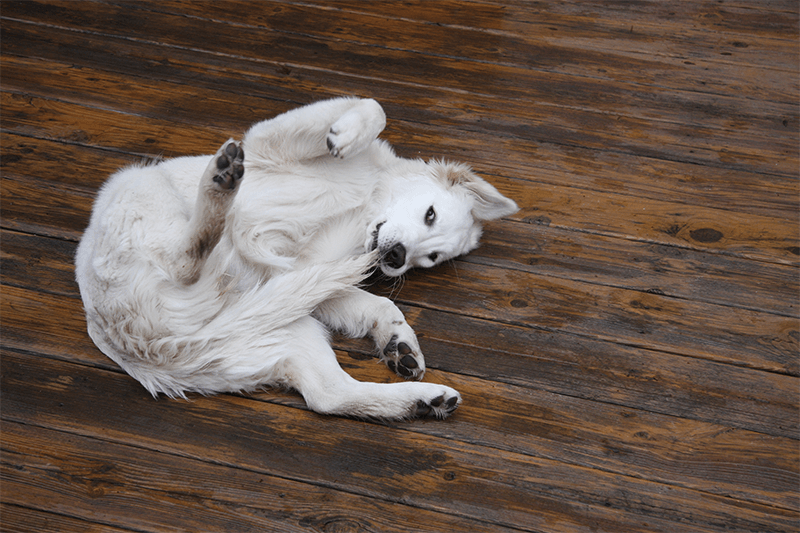
Boredom is often touted as a reason behind tail chasing, however, it’s usually not boredom but rather an inadequate level of physical activity that’s the cause.
If your dog has a great need for aerobic exercise, he or she might engage in chasing his own tail to exert energy.
If it’s the case, then the behavior should cease once activity levels increase.
4. When It’s a Problem:
It’s very normal for puppies to chase their tails, but it’s not common among adult dogs.
As your dog matures, she or he learns to distinguish her body parts by sight and loses much of her puppy playfulness.
Some adult dogs might still chase their tails as a move to gain your attention, but tail-chasing in adult dogs tends to be a sign of a bigger health issue.
Final Thoughts
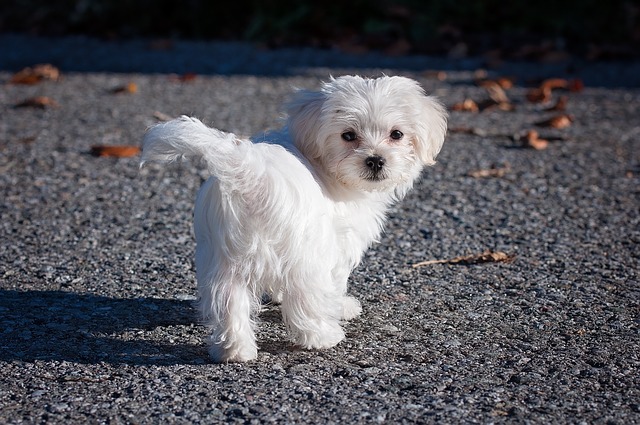
Dog owners quite often face a problem of dog chasing tail and crying.
If your dog follows a healthy diet, exercising regularly, getting enough attention, has an effective anti-parasite program in place, and is well-trained, there is no reason why they should chase their tail.
Occasional bouts of tail chasing can be ignored as harmless fun, but if your dog is making it a regular habit, please make sure you consult a vet.
It’s just another way to ensure your dog lives a long and happy life.
Enjoyed today’s post?
Leave us a comment below.
Happy Petting To You Guys!













[…] your dog wags tail in a circular motion which is also called “Helicopter Wag” that’s when your dog’s tail continuously going around […]